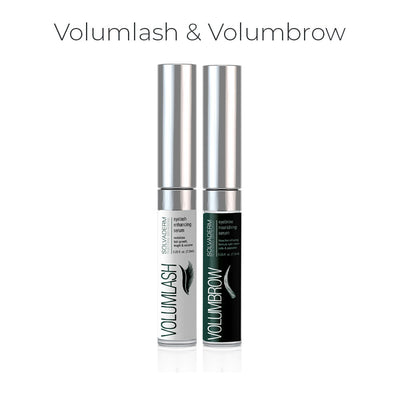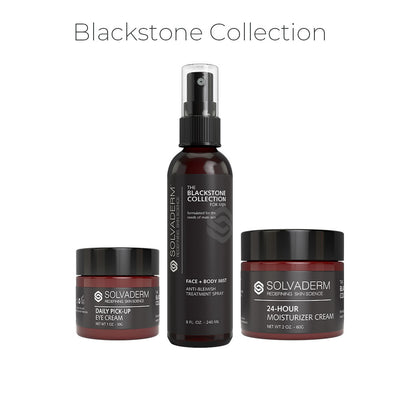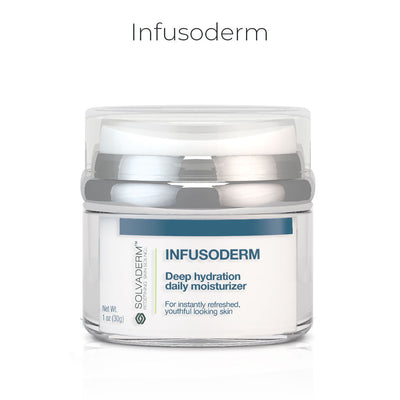Dry, flaky skin around the nose can be annoying and uncomfortable. The skin around the nostrils is delicate and prone to irritation, redness, and flaking.[1] While dry skin anywhere on the face is a concern, when it occurs around the nose, it can be especially bothersome. Fortunately, with the right skincare regimen and lifestyle habits, you can not only learn how to treat dry nose skin but also prevent dry skin around nose from occurring.
Why Do We Get Dry Skin Around The Nose?
Several factors contribute to parched skin in this area. The nose tends to lose moisture faster than other parts of the face. The nasal passages contain many nerves and blood vessels near the surface of the skin, resulting in greater transepidermal water loss.[2] The nostrils are also exposed to breathing exhalations, which can dry out the skin over time.
Additionally, the skin around the nose is constantly moving with facial expressions, leading to an increased breakdown of natural moisturizing factors in its outer layer.
Understanding the reasons behind dry skin around nose will help you pinpoint solutions. Here are some of the main causes of flaky, irritated skin around the nostrils.
Causes of Dry Skin Around The Nose
1. Dehydration
Lack of adequate water intake is a prime culprit for dry skin anywhere on the body, including around the nose. When the body is dehydrated, moisture reserves in the skin become depleted. Be sure to drink at least eight glasses of water daily to supply the skin with hydration from within.
2. Hot water
Excessively hot showers and facial cleansing with hot water strip the skin of its natural oils.[3] Always use lukewarm or cool water instead when washing the face.
3. Washing your face too much
Too much scrubbing and cleansing irritates the skin and compromises the skin barrier. Avoid cleansing more than twice daily, and use a gentle cleanser. The nasal passages are delicate, so learning how to treat dry nose skin properly without causing more damage is key.
4. Skin type
Those with naturally dry skin types are prone to flakiness and irritation around the nasal passages. Sebaceous glands around the nostrils may produce less oil, leading to dryness, so moisturize liberally if you have this type of skin.
5. Age
Mature skin has a decreased ability to retain moisture and the lipid barrier weakens with age. Applying moisturizer daily helps counteract age-related dryness.[4]
6. Allergies/cold
Blowing your nose frequently due to colds, allergies, and sinus conditions irritates the tender skin. Saline nasal rinses can help, along with moisturizer applied after blowing.
Why is This So Prevalent in the Nose?
The nostrils bear the brunt of exposure to both indoor heating and cold outdoor temperatures. The external nasal passages have many blood vessels near the surface, meaning they lose heat rapidly in cold air. Conversely, indoor forced-air heating also dehydrates the skin.
The act of breathing itself — inhaling and exhaling repetitively through the nose multiple times per minute — contributes greatly to nasal dryness. The cumulative effect is chronic dryness unless proper moisturizing and hydrating steps are taken regularly.
Dry Skin around Nose after Cold
Colds and allergies can have a detrimental effect on the nostrils and frequent blowing leaves the skin red, raw, and flaky. To treat this, opt for saline nasal sprays and gels to keep the nasal passages moisturized.
Coat the outer skin around the nostrils with a heavy, ointment-type product overnight. This helps repair damage to the moisture barrier and prevent peeling while you recover. Drink extra fluids and use a humidifier to keep nasal passages from drying out.
Dos & Don’ts to Prevent Dry Skin Around The Nose
- Do use a gentle cleanser and lukewarm water to wash your face. Avoid foaming cleansers with sulfates.
- Don't over-wash the area. Once or twice a day is sufficient.
- Do apply moisturizer immediately after washing before the skin dries out more. Occlusive like petroleum jelly seal in moisture.
- Don't pick at any flakes or peeling skin as this can cause further irritation.
- Do drink plenty of water, at least eight glasses per day.
- Don't use irritating astringents, toners, or exfoliants containing alcohol or acids as these dry the skin.
- Do use a humidifier at home and in the office to add moisture to the air.
- Don't use very hot water on your face or when you shower. Lukewarm water helps retain natural oils.
Best Ingredients for Dry Skin around the Nose
Look for the following beneficial ingredients when shopping for products to improve nasal dry skin:
-
Hyaluronic Acid - This substance holds up to 1,000 times its weight in water and forms a moisture-binding film on the skin.[4]
-
Ceramides - These lipids make up the skin barrier and seal in moisture, supplementing the natural ceramides depleted by dryness.[5]
-
Shea Butter - The thick texture of shea butter penetrates deeply and acts as an emollient.[6]
-
Glycerin - This is a humectant that draws moisture from the environment into the skin.[7]
-
Algae Extract - Algae is rich in vitamins, minerals, and antioxidants that nourish and soothe dry skin.
-
Exopolysaccharide - This ingredient forms a moisturizing film on the skin to prevent water loss.
-
Wakame Extract - Containing fucoidan, wakame extract protects the skin's moisture barrier.
How to Treat Dry Skin Around Nose?
With diligent skincare and hydration, you can smooth and soothe dry skin around the nostrils. Here are some methods that will show you how to treat dry nose skin effectively.
1. Moisturize your skin
Apply a facial moisturizer around the nose area both morning and evening. The daily moisturizer Infusoderm is an intensive hydrating cream that absorbs quickly, lasts all day, and relieves tight, dry skin around nose with regular use.
2. Hydrate
Using a hydrating serum containing hyaluronic acid adds moisture to skin cells. Apply a couple of drops of Intensive Hydration Serum Excelagene before your regular moisturizer at night. This is the best serum for dry skin as it keeps it supple and hydrated.
3. Use a nasal spray
Spritzing with a moisturizing nasal spray helps retain moisture in the nasal passages. Saline solutions are ideal for everyday use.
4. Get help with a humidifier
Humidifiers add much-needed moisture to dry indoor air, preventing moisture loss from nasal passages and skin. Aim for 30-50% humidity for optimal comfort.
5. Use the right products
Select skincare products designed for dry, sensitive skin. Avoid astringents, toners, and foaming cleansers that contain alcohol, sulfates, and other harsh ingredients.
6. Use sunscreen
Sun exposure exacerbates dry skin around nose.[8] Use a broad-spectrum moisturizing sunscreen like Dermaxsol SPF30 around the nose before going outside. Reapply every two hours if sweating or swimming.
Frequently Asked Questions
When Will My Skin's Dryness Go Away?
With consistent use of a moisturizer morning and night, dry, flaky patches should start improving within one to two weeks. Severely dry skin may take a month or so to clear up completely. Over-the-counter hydrocortisone creams may help relieve any redness and inflammation.
Can You Treat Dry Skin Around The Nose Yourself?
Yes, you can treat dry skin around nose yourself. A good skincare routine with non-irritating moisturizers suitable for your skin type should help treat nose dryness and make sure to drink plenty of water. See your dermatologist if symptoms persist despite your best efforts, as prescription-strength products may be warranted.
How Long Does It Take For Dry Nose Skin To Heal?
Allow one to two weeks of diligent moisturizing twice daily to notice an improvement in dry, flaky skin around the nostrils. Opt for a heavy ointment or petroleum jelly at night to repair the skin while you sleep. Severely cracked skin may take a month to smooth over.
How Do You Fix The Redness Around Your Nose?
Avoid picking or rubbing the nose, which exacerbates redness. Use gentle skincare products without alcohol or acids and apply a product containing 1% hydrocortisone to help reduce redness and inflammation. Stay hydrated and moisturize dry skin around nose frequently.
Conclusion
Flaky, peeling, dry skin around nose can be caused by a variety of factors. However, as you’ve seen, there are steps you can take that will help.
Staying hydrated, both internally and externally, will restore moisture balance to the skin, and it’s important to use the right skincare products around the area. Always opt for soothing treatments designed for sensitive skin to keep the nasal area well-conditioned and avoid harsh formulas that can cause further irritation.
Additionally, implementing healthy lifestyle habits like drinking more water, using a humidifier, and applying sunscreen will help prevent the skin from becoming parched.
With a customized skincare routine, the dehydrated skin around your nose will soon be soothed and comforted.
References
1] ↑10 reasons your face is red. www.aad.org.
2] ↑Stratum Corneum Defensive Functions: An Integrated View. Journal of Investigative Dermatology. 2005;125(2):183-200. doi:
3] ↑A Guide to the Ingredients and Potential Benefits of Over-the-Counter Cleansers and Moisturizers for Rosacea Patients. ncbi.nlm.nih.gov. Published October 29, 2021.
4] ↑Papakonstantinou E, Roth M, Karakiulakis G. Hyaluronic acid: A key molecule in skin aging. Dermato-Endocrinology. 2012;4(3):253-258. doi:
5] ↑Lee JB, Sung M, Noh M, et al. Effective association of ceramide-coassembled lipid nanovehicles with stratum corneum for improved skin barrier function and enhanced skin penetration. International Journal of Pharmaceutics. 2020;579:119162. doi
6] ↑Nilforoushzadeh MA, Amirkhani MA, Zarrintaj P, et al. Skin care and rejuvenation by cosmeceutical facial mask. Journal of Cosmetic Dermatology. 2018;17(5):693-702. doi:
7] ↑Atrux-Tallau N, Romagny C, Padois K, et al. Effects of glycerol on human skin damaged by acute sodium lauryl sulphate treatment. Archives of Dermatological Research. 2010;302(6):435-441. doi:
8] ↑RITTIE L. UV-light-induced signal cascades and skin aging. Ageing Research Reviews. 2002;1(4):705-720. doi:










